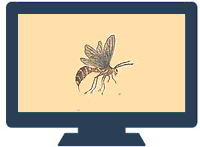Entomology, Department of

Department of Entomology: Distance Master of Science Projects
Date of this Version
Spring 2016
Document Type
Project
Citation
Entomology Distance Master’s Project, University of Nebraska-Lincoln, 2016
Abstract
Since the founding of the United States Army on the fourteenth day of June in the year 1775, the United States Military has had millions of noncombat-related casualties due to preventable illnesses and diseases transmitted through an arthropod vector. U.S. Military operations have been affected from the effects of the smallpox and malaria outbreaks as early as the Continental Army around 1775, as well as the Civil War period in the mid-1860s. In 1898, the U.S. Military was devastated with outbreaks of typhoid fever, yellow fever, and dengue fever during the months of the Spanish-American War (Artenstein et al., 2005). Infectious diseases became common in the U.S. Military, especially during overseas campaigns in tropical areas such as in the Philippines, South America, Vietnam, South Korea, Thailand, Japan, and others.
. . .
Outbreaks of tick-borne diseases remain common in the temperate and tropical regions of the world and within the United States, and the U.S. Military continues to come into contact with these diseases during overseas deployments and domestic field exercises. The U.S. Military and all the collaborating agencies continue to research and develop ways to prevent further infection from these diseases at the laboratories and other U.S. Military facilities located around the world; these agencies and organizations continue to take measures in the operation for prevention and control, and the production of possible vaccines and prophylactic drugs. The CHPPM continues to track the tick-borne diseases within the United States and neighboring countries; the surveillance system helps with monitoring, prevention, control, and research efforts for the Rickettsial diseases. The Armed Forces Pest Management Board (AFPMB) and United States Armed Forces Health Surveillance Center (AFHSC) continue to provide annual surveillance on vector-borne diseases, with detailed reports by Service Branch to include active component, National Guard, Reserve units, and other beneficiaries such as DoD civilians and contractors.


Comments
Copyright © 2016 Isa Hakima